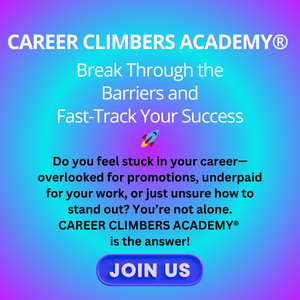What is the secret to success in business? That’s easy! It’s how well you know the competition.
Alright, maybe this is a slightly over-simplified perspective, but it always surprises me how many companies work with a primarily internal focus.
I have written many posts about knowing your customers, such as “Why Customers Are The Answer To All Your Problems (If You Ask the Right Questions).” Watching and listening to them in order to fully understand their rational needs and emotional desires is a great – and free! – way to start.
But today I would like to speak about doing exactly the same thing for your competitors. If you are going to succeed in attracting their customers away from their products and services, then it would make sense to know them as well as you do your own.
Here’s a simple three-step process to do so.
Encourage employees to use competitive products & services
 In most organisations today, using competitive products is still frowned upon; after all, we make the best don’t we, so why use those of other companies?
In most organisations today, using competitive products is still frowned upon; after all, we make the best don’t we, so why use those of other companies?
However to challenge and beat the competition you have to intimately know what you are up against. Regular contact with competitive products will encourage your employees to evaluate your own offering. They will also be encouraged to suggest competitors’ strengths and weaknesses that were perhaps not evident before. It will also ensure that you are rapidly aware of any improvements made by the competition. You won’t get left behind and find yourself suffering from declining sales due to competitive improvements of which you are unaware.
This intimacy with competitors’ products and customers should be requested of employees at all levels, by being one of their annual objectives. Of course, in some industries this might not be possible, due to the selective nature of the product or service, but certainly for most consumer products and service companies, this can easily be done on a regular basis.
Now encouraging people to use competitive products is easy to say, but you should also be prepared to invest in it, by paying for your employees to experience them. It would be unfair, and would certainly be resented, if your people had to spend their own money to make such experiences. This knowledge gathering should be seen as an investment by your organisation, of at least equal value to offering your employees discounts on your own products and services.
Why don’t you start a similar process and add these experiences to everyone’s annual objectives? It’s a great way, and a free one at that, to know the competition better than you do today.
Make a Library of Competitive Products and Material
 In one of my previous positions, the company had an incredible competitive library. This included every single competitive product that was available from all around the world, classified by country and organised by segment.
In one of my previous positions, the company had an incredible competitive library. This included every single competitive product that was available from all around the world, classified by country and organised by segment.
Everyone found this library extremely useful, especially when discussing such topics as shelf impact, packaging or in trying to understand our competitor’s portfolio strategy.
However, it was managed by the marketing services team and was hidden away in the lower ground floor where people rarely passed by. Additionally, the packs were emptied of their contents, to avoid infestations of vermin and insects, so people never got to try the products.
It would have been even better had the products been displayed in a location that was easily accessible to everyone. In addition, the products should have ideally been sampled before the packages were emptied of their contents. That said, they still remain one of the few companies I know that have been observing and following their competitors in such a consistent way for decades. As you can imagine, they were always ahead of the market and up-to-date with their competitive intelligence!
Another client of mine has made a library of communications material. Their advertising agency is of course the major source of the samples, but employees who travel are also encouraged to take photos of ads and promotional materials which are then added to the library. You would be amazed how inspiring it is to review this work whenever a group is discussing their own advertising and promotions. They avoid duplication, get great ideas from countries to which they don’t normally have access, and can again take their customers’ perspective when comparing the samples with their own work.
What could you do to make your competitors’ products and communications more easily accessible to your employees? If you’re serious about wanting to know the competition better than you do today, you have to stay on top of what they are doing at all times.
Understand your Competitors’ Customers too
 This same curiosity to know your competitors’ products can also be used to know and better understand your competition’s customers as well.
This same curiosity to know your competitors’ products can also be used to know and better understand your competition’s customers as well.
When your employees go out to observe your own customers, they should also pay attention to those people who are not using your products or services. In this way they can gather additional information that can then be compared with your knowledge of your own customers.
Whether it is getting a better understanding of your competitors’ products and services or the people that use them, the information accumulated must be stored and shared internally to be of any benefit. Some companies organise weekly or monthly sessions where people from different departments can share their latest knowledge and observations. For more ideas on how to share effectively read “Knowledge sharing and how to WOW!”
Other companies organise customer connection sessions where teams of employees from different departments – with differing perspectives – go out together with a task to complete or a question to answer. These could be for example:
- How, where and when do people use our product or service?
- What is their biggest frustration in shopping for the category?
- If they could make one change to our major competitor’s product, what would it be?
- What differences are there in the way the category’s brands are displayed?
- Which social media channels are most popular with category users?
Employees gather ideas and information by first observing and only afterwards asking questions for clarification purposes. Upon their return, the teams can meet up to share their ideas and learnings, as well as to discuss the impact of their findings and agree on what actions if any need to be taken. For more details on how to observe customers, whether your own or those of your major competitors, read “Five Rules of Customer Observation and Why it’s Hard to Do Effectively.”
I have witnessed these customer connection sessions being run in countless organisations. Every single time I see just how excited and energised employees get about improving the way the company makes, packs, sells or communicates its products and services.
Isn’t it time your organisation got closer to your customers and those of the competition?
These are three ways you can easily and quickly know the competition better than you do today. Do you have other ideas that you’d like to share? I’d love to see your comments below.
Have you run any such customer connection exercises, or built a competitive library of products in your own organisation? If so please share your experiences too.
For more ideas on how you can know the competition even better, why not organise one of our 1-Day Catalyst Training Sessions? We have them on many areas of brand building, so you are sure to find exactly what you need to inspire and energise your team. Check out and download our brochures here. If you would rather talk through your needs first, then feel free to book time in my calendar.
This post is an update of one that was first published on C3Centricity in 2011. All images in this article are from the book “Winning Customer Centricity – Putting customers at the heart of your business – One day at a time.”












